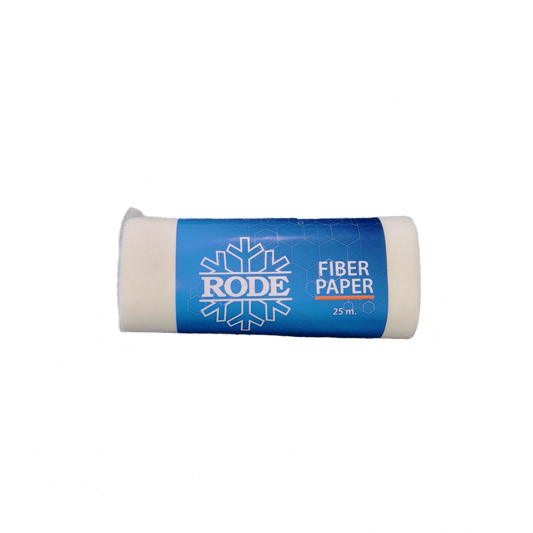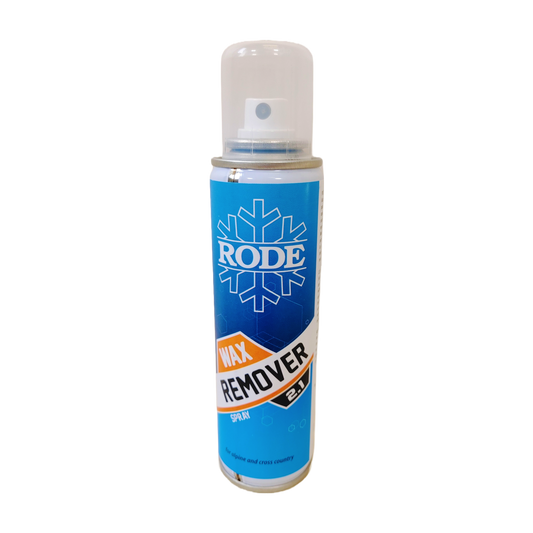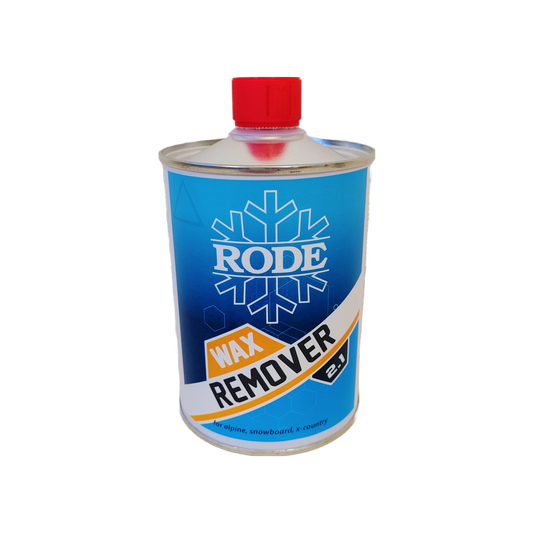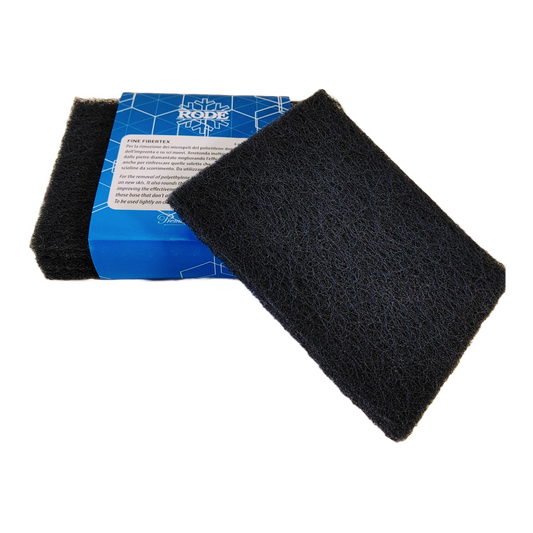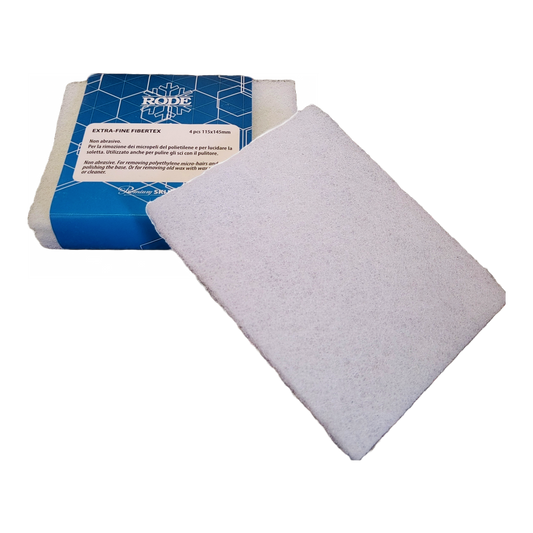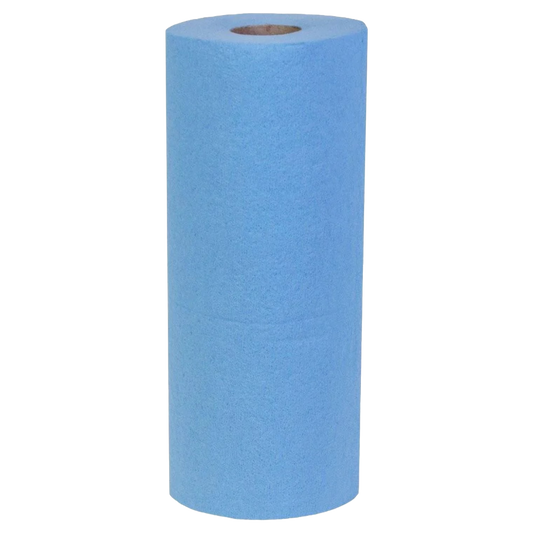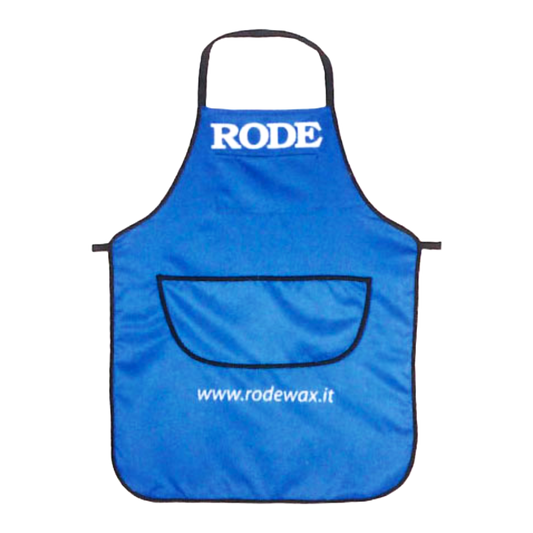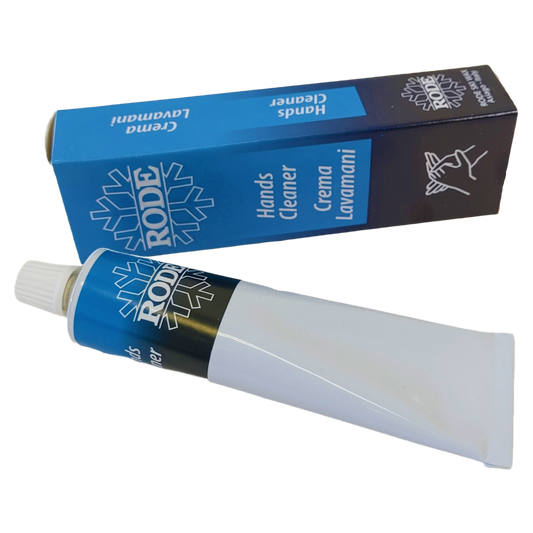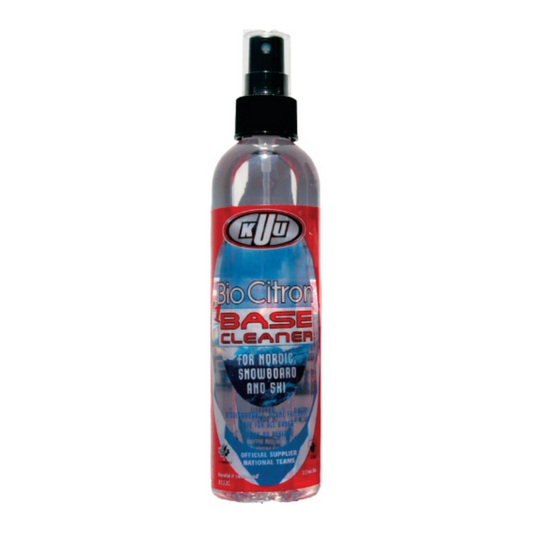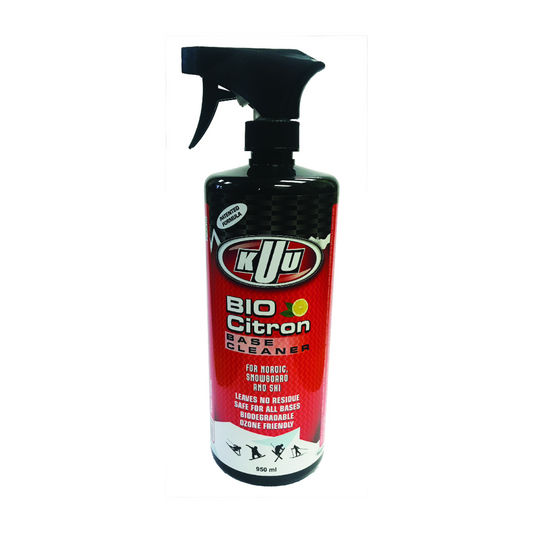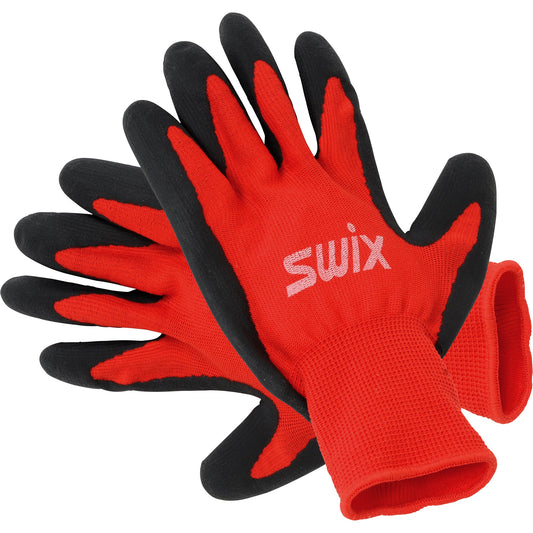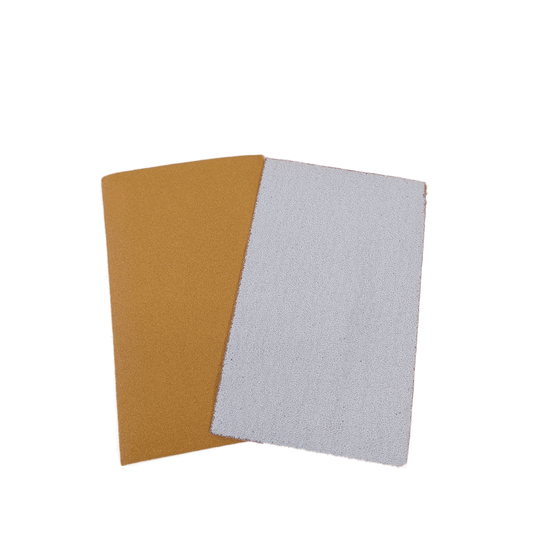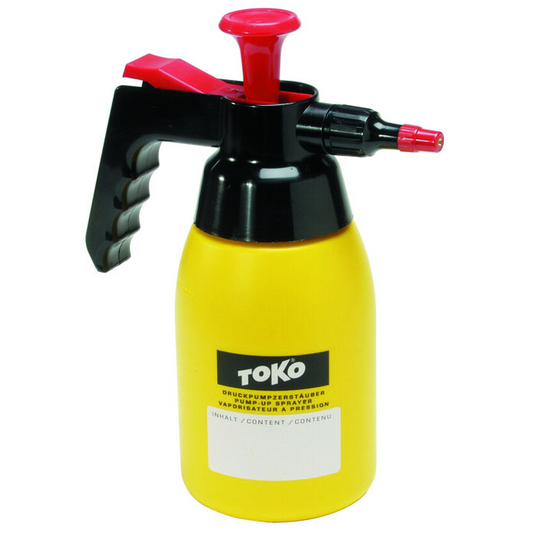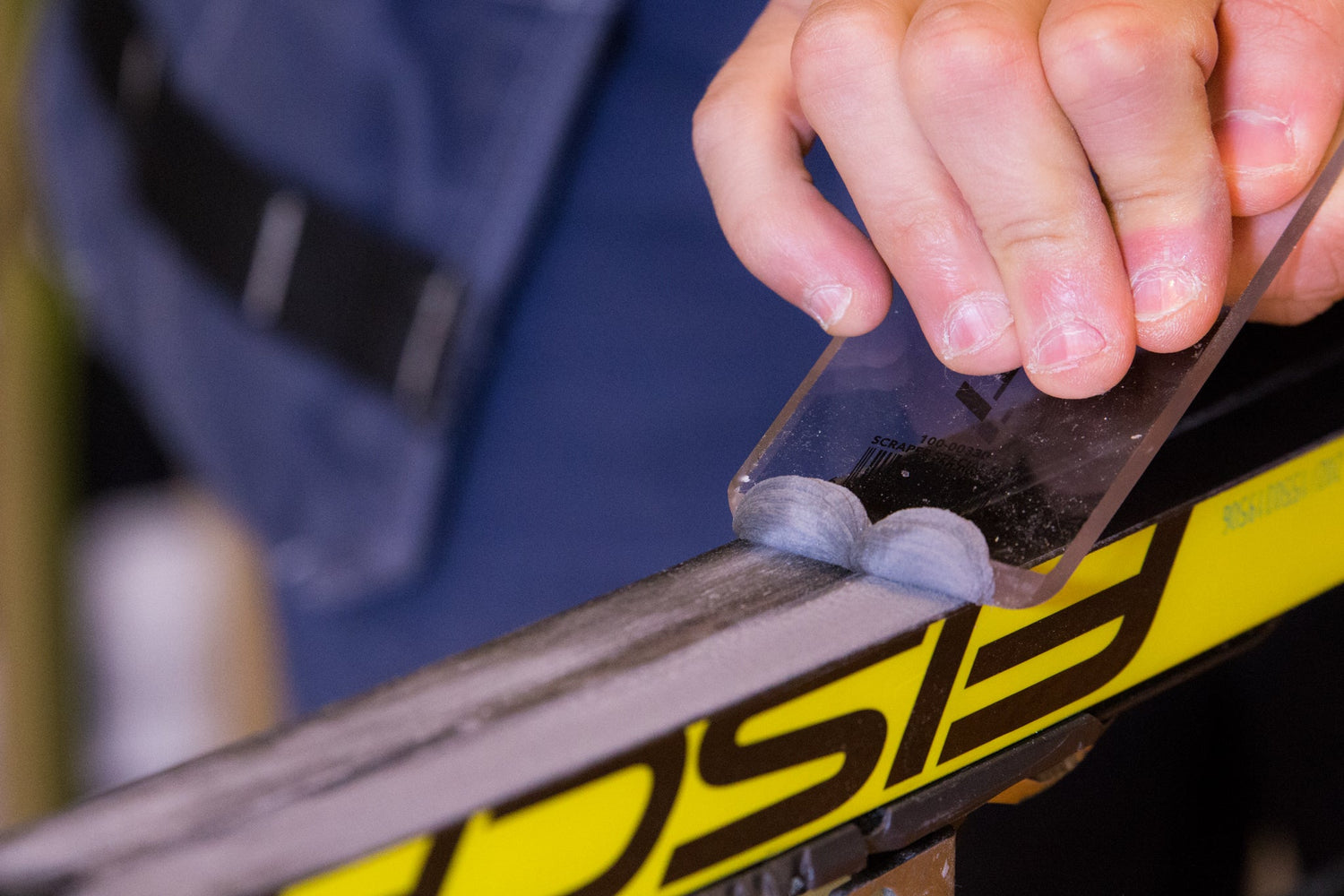
Cleaning Grip Zones
When you are done skiing on your waxable classic skis, removing the kick wax is key if you're packing your ski bag for travel or your kick wax has picked up a lot of grime from the trails. Also, if the weather forecast is predicting a change of kick wax or when it's the end of the season, it's time to clean off that old grip wax. Especially if it's Klister or another sticky hardwax, cleaning kick wax can be a harrowing process if you don't know the tricks!
How-To Video
Step-by-Step
1) Use a grip wax scraper to remove as much of the wax as you can. If the wax is not coming off nicely, you can try heating it with a heat gun before scraping.
2) Squirt a decent amount of wax remover on the grip zone and let it sit for a minute or two.
3) Leaving the wax remover on the grip zone, use a bit of Fibertex to rub off any kick wax still stuck to the base until the wax remover is a slurry. Be sure to thoroughly clean the sidewalls and groove of the ski with the Fibertex.
4) Use a piece of Fiberlene or shop towel to wipe off the slurry from the grip zone and sidewalls.
5) Soak a section of Fiberlene or shop towel with wax remover and wipe down the grip zone and sidewalls until there's no more stickiness.
6) Your skis are now ready for travel, storage, or the next kick wax application. Your future self will thank you for taking care of business!
Products for Cleaning Grip Zones
-
Rode Fiber Paper | 25m
Regular price $17.96 CADRegular priceUnit price / per$0.00 CADSale price $17.96 CAD236 in stock -
Rode Wax Remover 2.1 (150ml, 500ml, 1L)
Regular price From $18.96 CADRegular priceUnit price / per$0.00 CADSale price From $18.96 CAD471 in stockRode Wax Remover 2.1 (150ml, 500ml, 1L)
Regular price From $18.96 CADRegular priceUnit price / per$0.00 CADSale price From $18.96 CADRode Wax Remover 2.1 (150ml, 500ml, 1L)
Regular price From $18.96 CADRegular priceUnit price / per$0.00 CADSale price From $18.96 CAD -
Rode FiberTex
Regular price From $13.96 CADRegular priceUnit price / per$0.00 CADSale price From $13.96 CAD37 in stockRode FiberTex
Regular price From $13.96 CADRegular priceUnit price / per$0.00 CADSale price From $13.96 CADRode FiberTex
Regular price From $13.96 CADRegular priceUnit price / per$0.00 CADSale price From $13.96 CAD -
Shop Towel for Ski & Snowboard Waxing
Regular price $6.95 CADRegular priceUnit price / per$0.00 CADSale price $6.95 CAD2 in stock -
Rode Apron
Regular price $33.96 CADRegular priceUnit price / per$0.00 CADSale price $33.96 CAD15 in stock -
Rode Wall Ski Holder (8 Pairs)
Regular price $29.96 CADRegular priceUnit price / per$0.00 CADSale price $29.96 CAD64 in stock -
Rode Hand Cleaner Cream | 60g
Regular price $19.96 CADRegular priceUnit price / per$0.00 CADSale price $19.96 CAD11 in stock -
Kuu Bio Citron Base Cleaner
Regular price From $22.00 CADRegular priceUnit price / per$0.00 CADSale price From $22.00 CAD46 in stockKuu Bio Citron Base Cleaner
Regular price From $22.00 CADRegular priceUnit price / per$0.00 CADSale price From $22.00 CADKuu Bio Citron Base Cleaner
Regular price From $22.00 CADRegular priceUnit price / per$0.00 CADSale price From $22.00 CAD -
Swix Tuning Gloves
Regular price $30.00 CADRegular priceUnit price / per$0.00 CADSale price $30.00 CAD1 in stockSwix Tuning Gloves
Regular price $30.00 CADRegular priceUnit price / per$0.00 CADSale price $30.00 CADSwix Tuning Gloves
Regular price $30.00 CADRegular priceUnit price / per$0.00 CADSale price $30.00 CAD -
Rode Sandpaper
Regular price $13.96 CADRegular priceUnit price / per$0.00 CADSale price $13.96 CAD16 in stockRode Sandpaper
Regular price $13.96 CADRegular priceUnit price / per$0.00 CADSale price $13.96 CADRode Sandpaper
Regular price $13.96 CADRegular priceUnit price / per$0.00 CADSale price $13.96 CAD -
Toko Pump-Up Sprayer
Regular price $80.00 CADRegular priceUnit price / per$0.00 CADSale price $80.00 CAD3 in stock
Ski Waxing Safety Measures
Safe Ski Waxing: Protect Yourself While Prepping Your Skis
Ski waxing is key to great performance on the snow, but it involves chemicals, heat, dust, and fumes that require careful handling. Prioritizing safety protects your health and ensures the waxing process is both effective and responsible.
Follow these essential safety practices every time you wax:
1. Maximize Ventilation: Fresh Air is Crucial 🌬️
- Why? Hot waxing, solvents, and brushing release fumes and fine dust particles that shouldn't be inhaled.
- Best Practice: Wax outdoors whenever possible.
-
Indoors: Ensure excellent air exchange.
- Work near open windows or doors.
- Use powerful exhaust fans (like range hoods or dedicated extraction systems) vented directly outside.
- Simple fans just circulating air within the room are not sufficient.
- Speak Up: If you're in a shared facility (like a team wax room or event) and ventilation seems poor, notify staff or organizers immediately. If you can strongly smell fumes or wax, ventilation isn't adequate.
2. Protect Your Lungs: Use a Respirator 😷
-
Why? Waxing generates harmful airborne particles and fumes from multiple sources:
- Smoke/fumes from hot waxing irons or machines.
- Dust from scraping and brushing wax.
- Vapors from evaporating solvents in liquid waxes and cleaners.
- Dust from fleece/wool application methods.
- Fumes from heating grip waxes and klisters.
-
Action: Wear a respirator suitable for both particulates (dust) and organic vapors (fumes/solvents).
- Look for respirators with P100 particulate filters combined with organic vapor cartridges.
- Ensure a proper fit. Facial hair can prevent a good seal.
- Replace filters and cartridges according to the manufacturer's recommendations or when you notice smell/taste breakthrough or increased breathing resistance.
3. Protect Your Eyes: Wear Safety Glasses 👓
- Why? Dust, flying wax particles, and potential splashes from cleaners can irritate or injure your eyes.
- Action: Always wear safety glasses or goggles. A full-face respirator also provides eye protection.
4. Protect Your Skin: Wear Gloves 🧤
- Why? Waxes and solvents contain chemicals that can be absorbed through the skin or cause irritation.
- Action: Wear chemical-resistant gloves (nitrile gloves are a common and effective choice). This keeps your hands clean and prevents direct skin contact with potentially harmful substances.
5. Maintain a Safe Wax Room Environment 🚫
- Control Access: Only those actively involved in waxing should be in the immediate waxing area to minimize exposure for others.
- No Food or Drink: Never eat, drink, smoke, or store food in the waxing area. This prevents accidental ingestion of harmful residues.
- Cleanliness: Keep your workspace tidy. Clean up spills immediately and manage wax scrapings (see next point).
6. Handle Wax Waste Responsibly ♻️
- Why? Wax shavings and dust contain the same chemicals you're protecting yourself from during application. Proper disposal protects the environment and prevents contamination.
-
Action:
- Collect all wax shavings, dust, and used cleaning materials (paper towels, rags).
- Place them promptly into a sealed plastic bag or designated waste container.
- Dispose of according to local regulations. (Note: Regulations for fluorinated wax disposal might be stricter in some areas – check local rules).
7. Control Your Iron Temperature 🔥
- Why? Overheating wax creates significantly more fumes and can damage your ski base.
- Action: Always use the wax manufacturer's recommended temperature for your specific wax. Don't guess!
8. Handle Cleaners & Solvents with Extra Care 🧪
- Why? Base cleaners and liquid waxes often contain volatile organic compounds (VOCs) that are easily inhaled and can be flammable.
-
Action:
- Use solvents and cleaners sparingly.
- Ensure maximum ventilation when applying them.
- Keep containers sealed when not in use.
- Crucially: Keep solvents far away from heat sources like your waxing iron, space heaters, or open flames.
Your Health Comes First!
By consistently following these safety protocols, you protect yourself from potential respiratory issues, skin irritation, and other health effects. Safe waxing allows you to focus on getting the best performance from your skis and fully enjoy your time on the snow.

